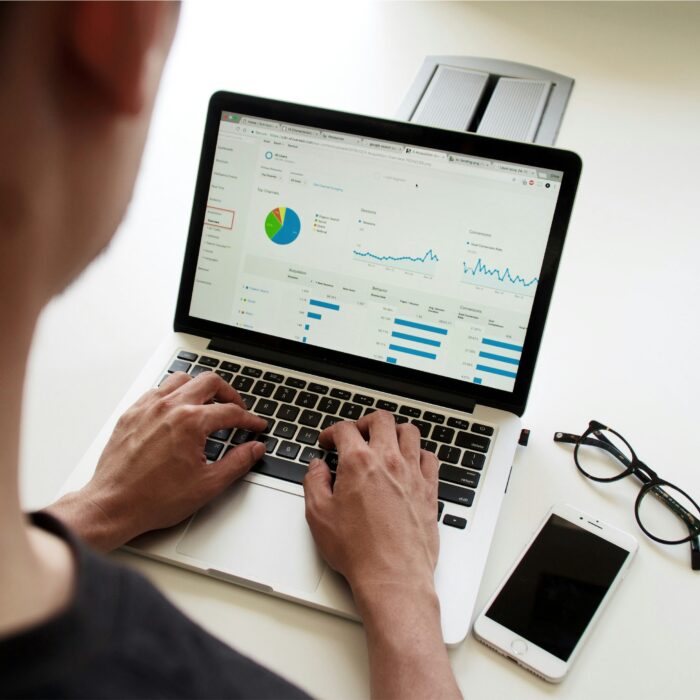B2B goes B2C: The shift to direct to consumer
by February 27, 2025
We’ve all been seeing the direct to consumer (DTC) trend grow in popularity recently, and while it’s not a new trend, it is one that is here to stay. A report from Shopify Plus tells us that e-commerce sales are going to account for 6.6% of all consumer packaged sales. And DTC accounts for 40% of the sales growth in the sector.
So what do brands need to know when getting into the DTC game? It’s not an easy thing to accomplish, and there are a lot of considerations when shifting to a direct to consumer approach. Let’s dive in.
What does direct to consumer mean?
Direct to consumer means that you are selling your product or service directly to your customer, cutting out the third-party retailers and other intermediaries. So for example, having an e-commerce store where customers can purchase your products directly rather than buying them from a store.
Why is this shift happening now? Direct to consumer is nothing new, but more brands are embracing the concept as a result of COVID-19. When the pandemic jump-started the e-commerce boom, it changed how brands interact with customers. Gone were the days of employees greeting customers in stores and upselling in person. Foot traffic diminished as people quarantined in their homes and began relying on brands to bring their products directly to their front door. When people began looking for athlesiure to work from home in, they were doing it online and purchasing directly from a store, rather than going to the mall and selecting a product from a large retailer. This change in customer habits, shifting the percentage of buying even more online, creates an opportunity for savvy brands to make more of a direct connection with customers, and sell to them.
Take a look at some popular brands taking advantage of the direct to consumer trend: HelloFresh, Billie, Barkbox, Avocado Green Mattresses. These are becoming household names. Consumers have spoken: from prepared meals to razors, they see the value in purchasing directly from brands these days. Even as the pandemic (hopefully) comes to an end soon, studies show that consumers won’t be giving up purchasing directly from brands anytime in the future.
Why make the shift to DTC now
While it can be an undertaking to make the necessary changes to your business to allow a DTC experience to thrive, there are some big payouts for the brand as well. Let’s take the mattress for example. Traditionally, a consumer looking to purchase a new mattress would head to a chain mattress store and buy whichever option they felt was most comfortable. Not a bad experience, but for the chosen brand, they are losing out on the reward of gaining a customer. That person who purchased the mattress is a customer of the chain mattress store, meaning they are the ones who get to engage with them via email or social media. Even more, they will be the one to gain their customer loyalty, not you.
Enter direct to consumer. For a company like Avocado Green Mattresses, they will sell you a mattress online and ship directly to your door. Now they have added a new customer directly to their database. They get to add to their mailing list, and control how they nurture the relationship with that customer. DTC gives the power back to the brand, instead of the third-party retailer.
However, this DTC model isn’t without tradeoffs. Since most DTC brands don’t have brick and mortar locations, moving DTC means you’ll have to allow for concessions like free returns and year long trials, like Avocado Green Mattress. You need to assure consumers that even though they aren’t touching and feeling the product in person, they can make the purchase knowing they can send it back if it does not fit their needs.
Other benefits of shifting to DTC include being able to cut down on in-store inventory, not being limited to making sales during certain hours, and increasing the ways you interact with consumers through push notifications, social media, and emails. You are also saving the consumers from having to leave home to make a purchase from your brand. During a pandemic, this goes a long way.
How to optimize your business for DTC
First things first, having a strong e-commerce store is key. You want the shopping and checkout experience to be as positive for your customers as possible. Don’t make it difficult for shoppers to find what they are looking for on your site. Make it simple for them to shop, search, and checkout.
Find ways to mimic the traditional brick and mortar experience that shoppers are accustomed to. For example, for a clothing retailer, consumers are used to trying things on before buying. To try and give them a similar experience in the new model, give customers the option to buy items online and send them back with free returns if they don’t fit properly or don’t want to keep the item. Bridging the gap between the traditional shopping experience and the new experience helps customers become accustomed to the digital buying experience.
A strong social media presence will be helpful in making the DTC shift as well. Customers are becoming more interactive with brands on social media channels. A strong social media profile will encourage customers to follow and like your posts. Going even further is the idea of social selling. Nowadays, brands have implemented one-click buying through their social media accounts. If you see something in your Instagram feed from a brand you follow, you can now buy it directly on Instagram, rather than having to find it on a website. Essentially, the e-commerce equivalent of window shopping is scrolling through your social media feeds. Give them the right posts that will make them stop and see what your product offerings are, and maybe they’ll even purchase while in the social media app.
Sales tax complications
Optimizing your customer’s online shopping experience means you need to consider how you are calculating and collecting sales tax. When you move to DTC and embrace the e-commerce movement, you’re opening your business up to sales that might be outside of your state. You’re going to need to consider how you are managing your sales tax calculations. From which customers to charge, to what amount to charge to how to go about filling out a sales tax, sales tax is different when selling online. Here’s how sales tax gets more complicated as you move to e-commerce.
Your physical location is no longer the point of sale
The point of sale is the customer’s shipping address now. When selling to multiple customers across state or city borders, those sales tax rates vary.
- The solution: Depending on how you’ve chosen to sell online, the online platform you’ve chosen likely has a sales tax collection engine. However, you will need to be sure to tell your online sales channel in which states you want to collect sales tax. Don’t skip this step when setting up your online store! Forgetting to collect sales tax can result in a tax bill out of your pocket.
You may be required to collect sales tax from buyers in other states
Expanding your customer base to outside of your state by hopping on the e-commerce train is a great thing for your businesses. But it will leave you with new sales tax responsibilities.
You may find that you now have sales tax nexus in other states, too.This is because of the concept of economic nexus. Most states have “economic nexus” laws that state that a retailer who meets certain criteria in the state has sales tax nexus in that state and is required to collect sales tax from buyers in that state.
- The solution: For those who don’t want to keep track of their nexus status in multiple states, you can rely on TaxJar’s Economic Nexus Insights Dashboard. Our dashboard will let you know if your business has economic nexus in a state. We will also show you if your business is approaching economic nexus in a state so that you can be prepared.
TaxJar integrates with all of the shopping carts and marketplaces on which you sell. We keep up with every state’s economic nexus threshold.
Shipping charges
When you sell a product in your brick and mortar store, your customer walks out with their purchase in hand and the sale is complete. But when you sell an item online, there’s the whole separate issue of getting the product to your buyer.
This generally involves packaging the item up and shipping it out to your customer. But there’s a wrinkle – more than half of US states require that you charge sales tax on shipping charges.
By shipping charges, states generally mean the price you charge your customer in order to ship the item to them. Say you charge a $2 flat shipping fee for all of the books that you sell. In a state where you have sales tax nexus and where shipping is taxable, you’d be required to include that $2 shipping charge in the total sales tax collected from your buyer.
- The solution: Fortunately, most e-commerce platforms, including the TaxJar API, allow you to tell them whether or not you want to charge sales tax on shipping charges.
But, since e-commerce platforms generally do not provide guidance, we’ve put together a list of states that require retailers to charge sales tax on shipping. Be sure to click through and read about your individual state (or states). Each state has slightly different rules and laws when it comes to charging sales tax on shipping charges.
Ready to automate sales tax? Sign up for a free trial of TaxJar today.
Now is the time to shift to DTC
If your head is scrambling with all the things to do and you think you are too late to the game – take a breath. There is always time to optimize your e-commerce experience and create better relationships with your customers.
The surge of DTC is here to stay. Consider what it would take to get your business setup for DTC success and take it one step at a time. The possibilities are endless when it comes to how many customers you can grow when you think outside of your store radius.








